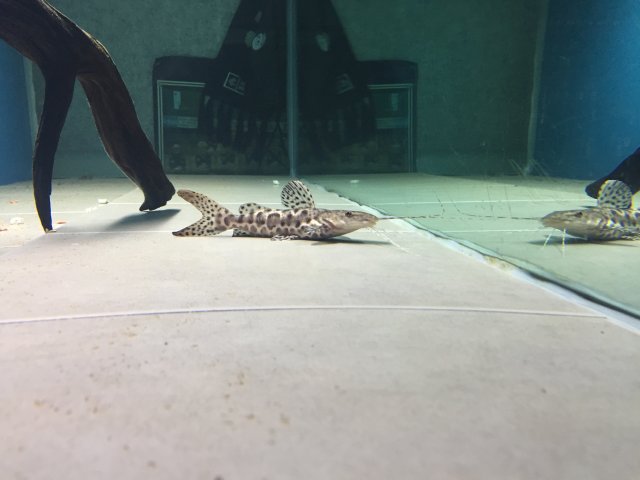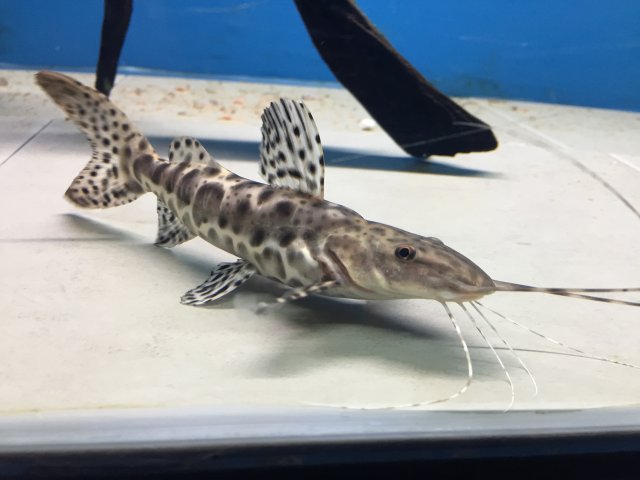? I hope we are looking at the same thing and just using different words. My impression is that, external appearance-wise, TSNxLei is closer to TSN just like TSNxRTC is closer to TSN, which is the mother species in both hybrids (or so you tell me, Cliff) and that makes it logical, no?
Without exception, whenever I come across a large TSNxLei at any LFS (a return or a trade-in), they are labeled TSN because that's the closest they look to to the LFS owners.
LeixRTC may look so close to Lei because Lei is the maternal species here. Can you confirm or refute that from your database, Mr. Hybrid Catfish Nut In Residence?
Would that reconcile our differences?
I see your point. In the case of tsn x lei usually it does look more tsn-like. This particular one def goes more towards lei. This might also lend one to think it is a reverse cross. Lei x tsn vs tsn x lei. In my investigations the fish do tend to take on the maternal traits more so. When these hybrids were first produced they crossed both ways to find which combinations had higher hybrid vigor and higher carcass yield, taste, desiese ressistance, ect. It is more widely documented in NA species. In the blue x channel hybrid the fiah looks very blue like and in the channel x blue it is more channel like. The most commonly produced however is the blue x channel which has superior growth to either parent and desiese resistance with higher food conversion as well.
Back to this hybrid. If memmory serves me well it was crossed both ways and with two different tsn species as well. Both fasciatum and corruscans. Also many tsn x tsn hybrids were produced and many lei x lei as well. It was more advantageous to go outside the genus however as it yielded greater results. P. Fasciatum by my and Dr. Lundbergs findings was the most successful in hybridization and is used almost exclussively. Same with L. Marmoratus. That being said these hybrids were being produced many years before new revisions or pimelodidae and it is likely that standard procedures are not always standard and sometimes F2-F3 ect hybrids may make it into the hobby as some of these hybrids are fertile. That opens up even more confusion as these hybrids can produce more hybrids when mated or either of the paternal species. If mated back to a paternal species you will get a lower ratio of one of the paternal species for instance tsn x lei bred with lei. You would have offspring that are very fertile and 25% tsn whilr 75% lei.
I dont know that this helps or just lends to the confusion. Also important to note that wild hybrids do also occur although very infrequently. So most "pure" species tested have actually been found to contain small percentages of genetic material from other species. We are finding out that hybrids actually can play a huge roll in the evollution of not only fish but all animals.
Sent from my SCH-S738C using MonsterAquariaNetwork App





